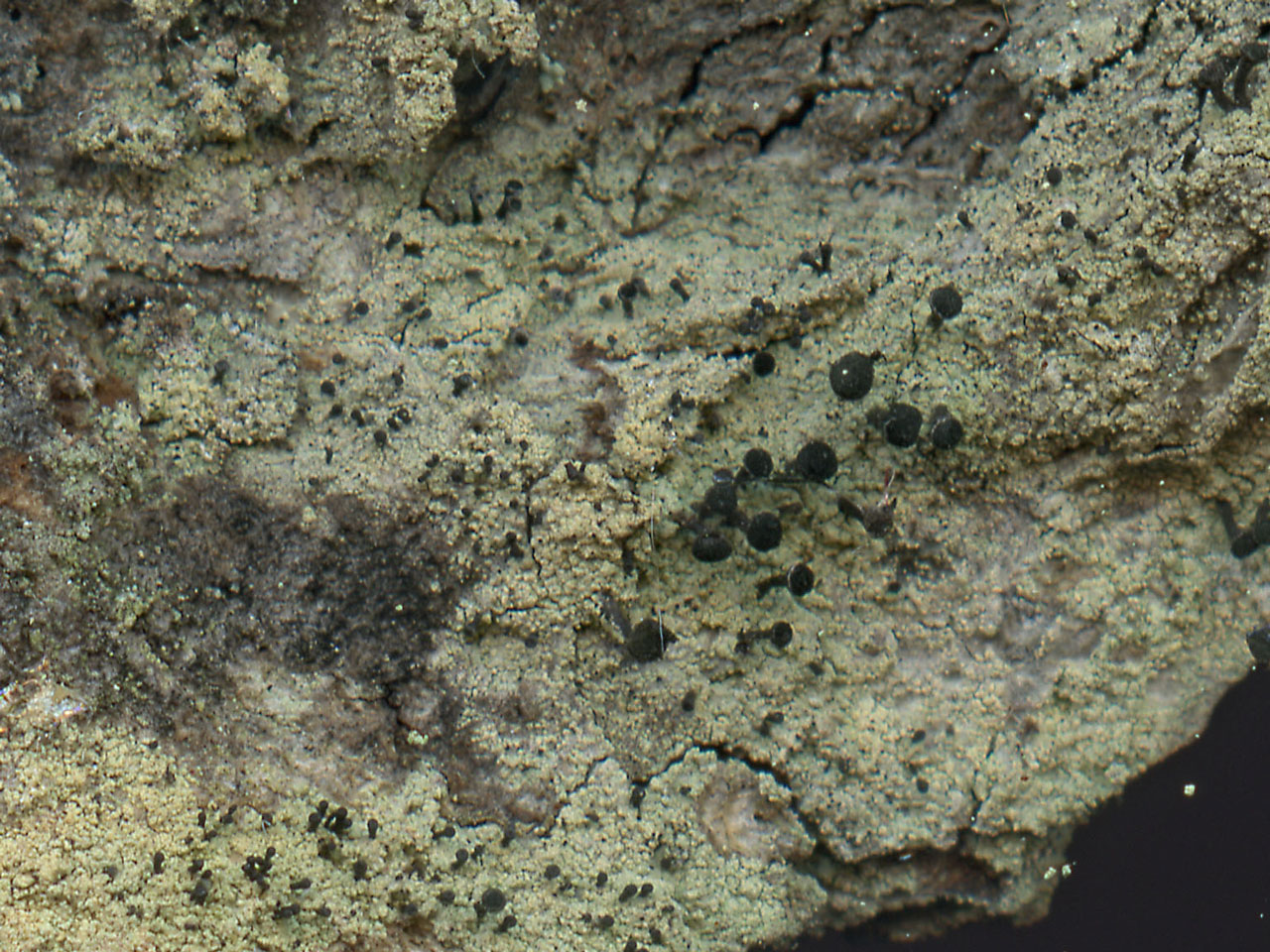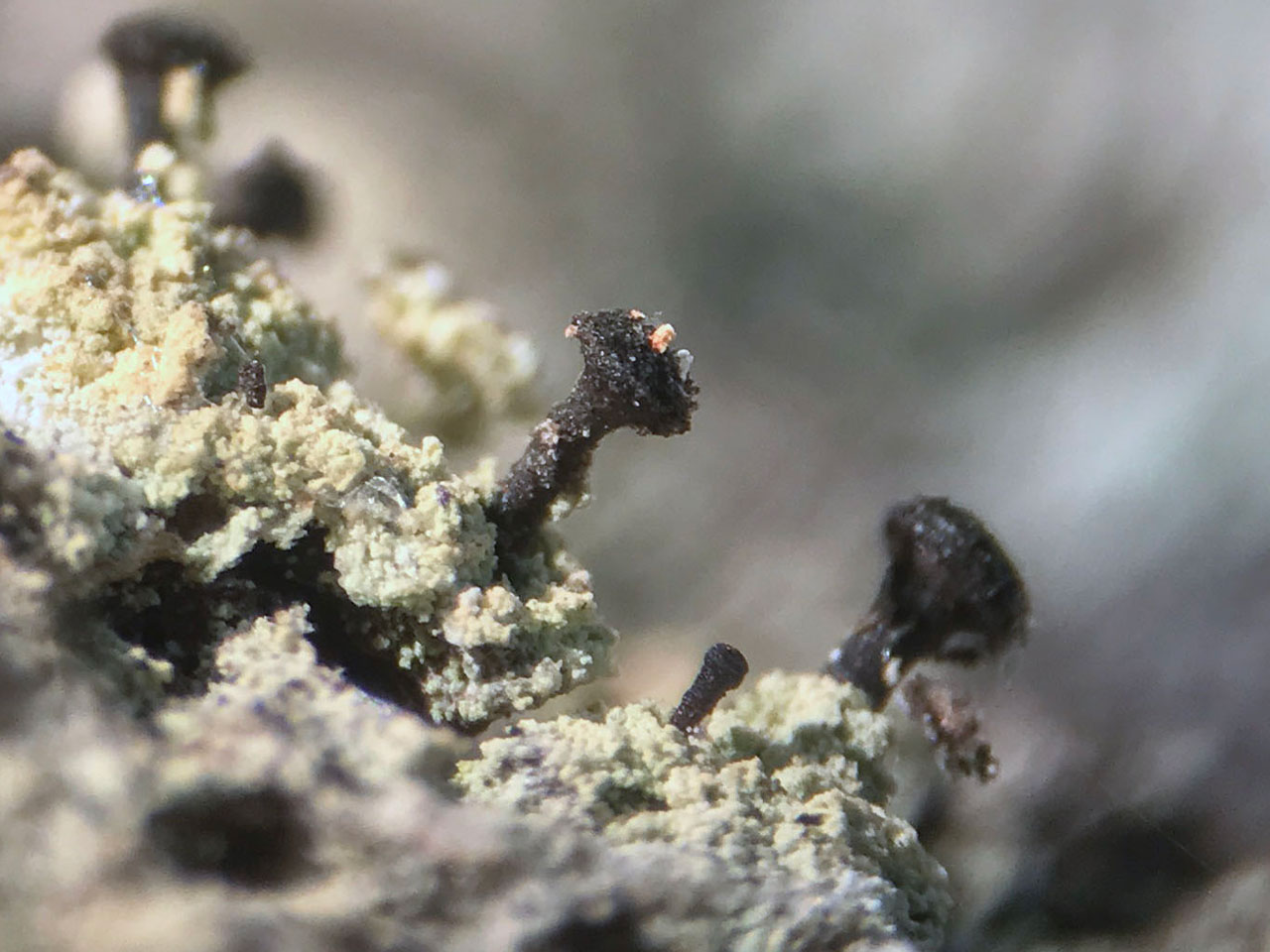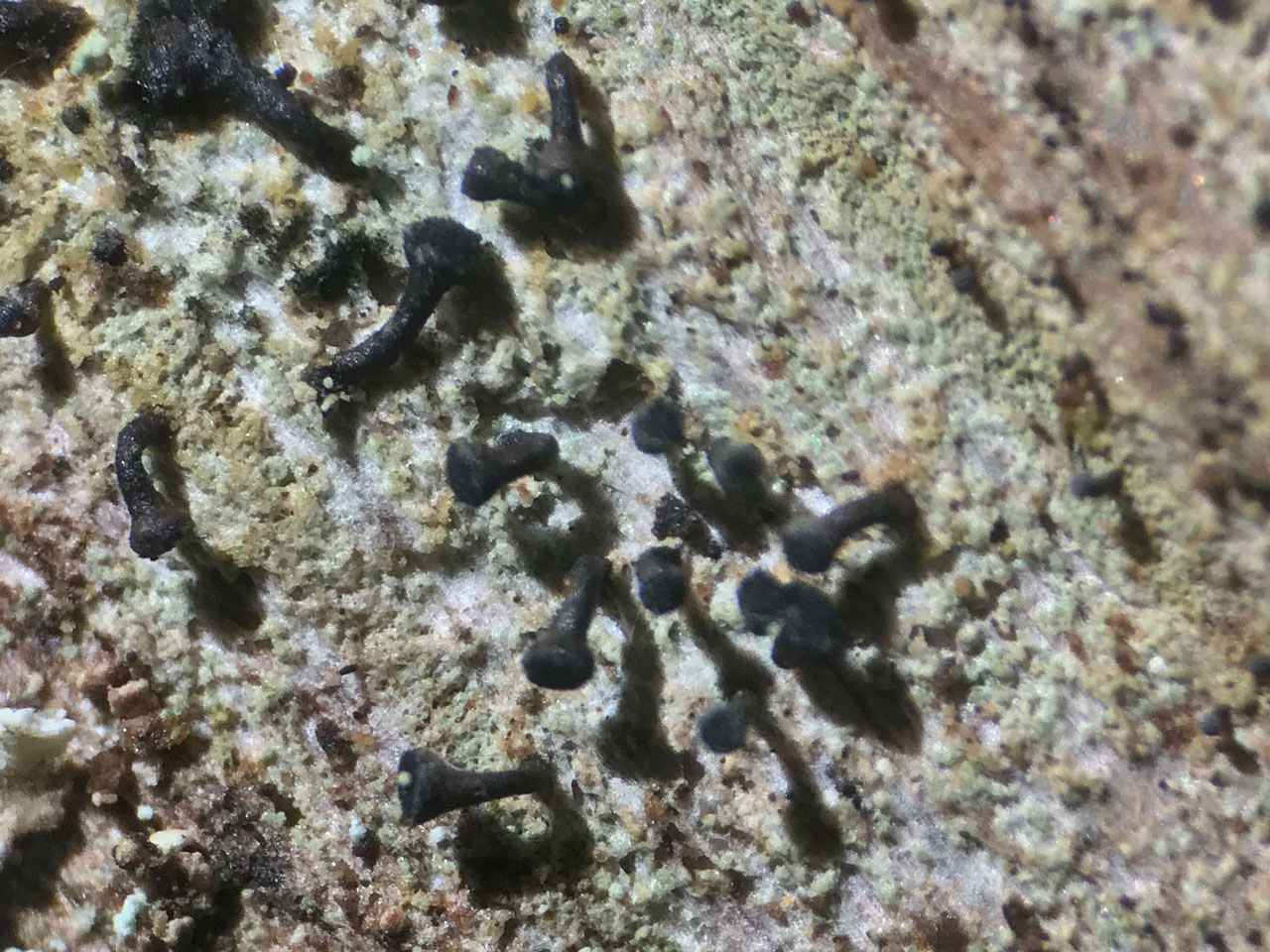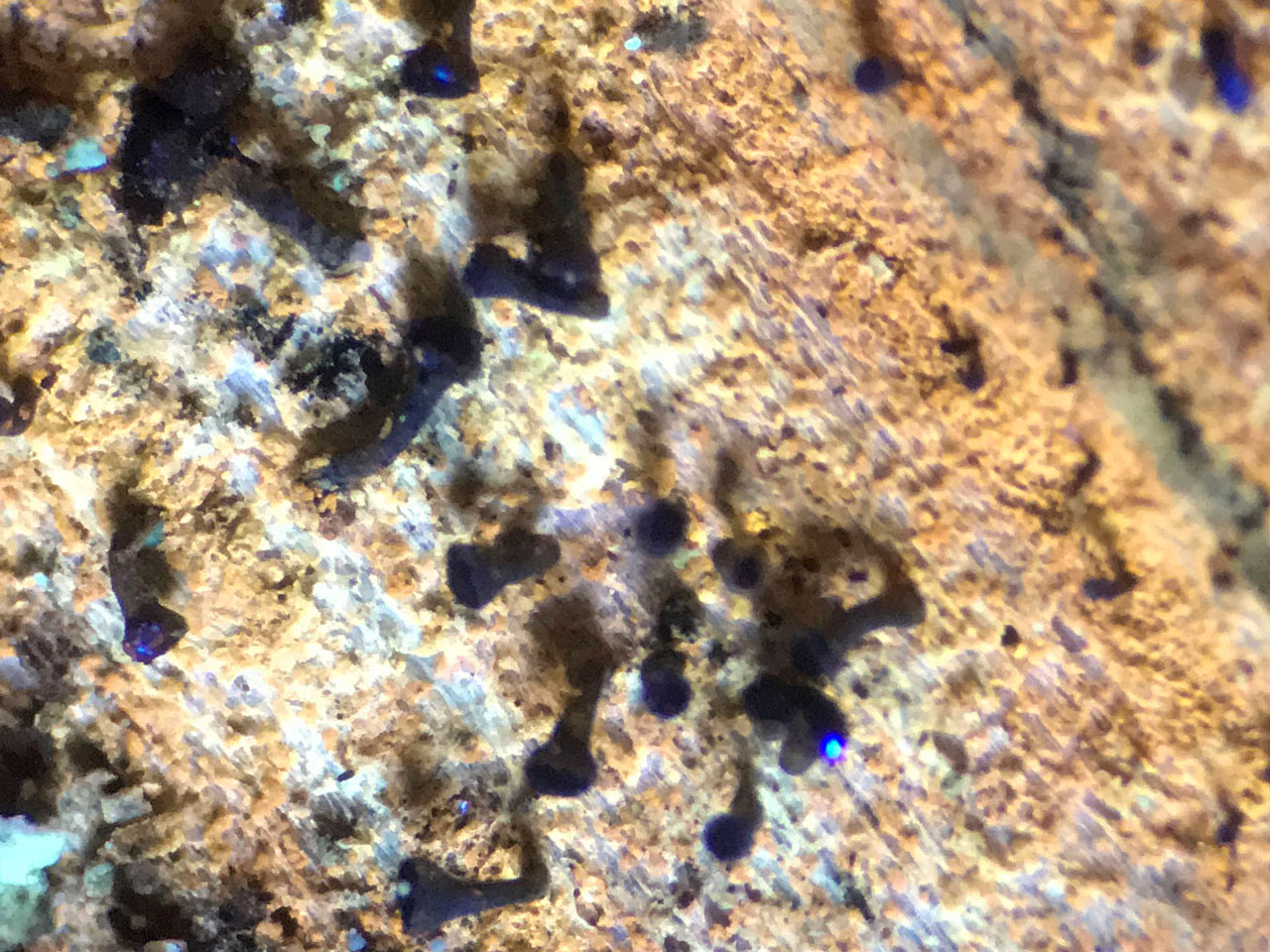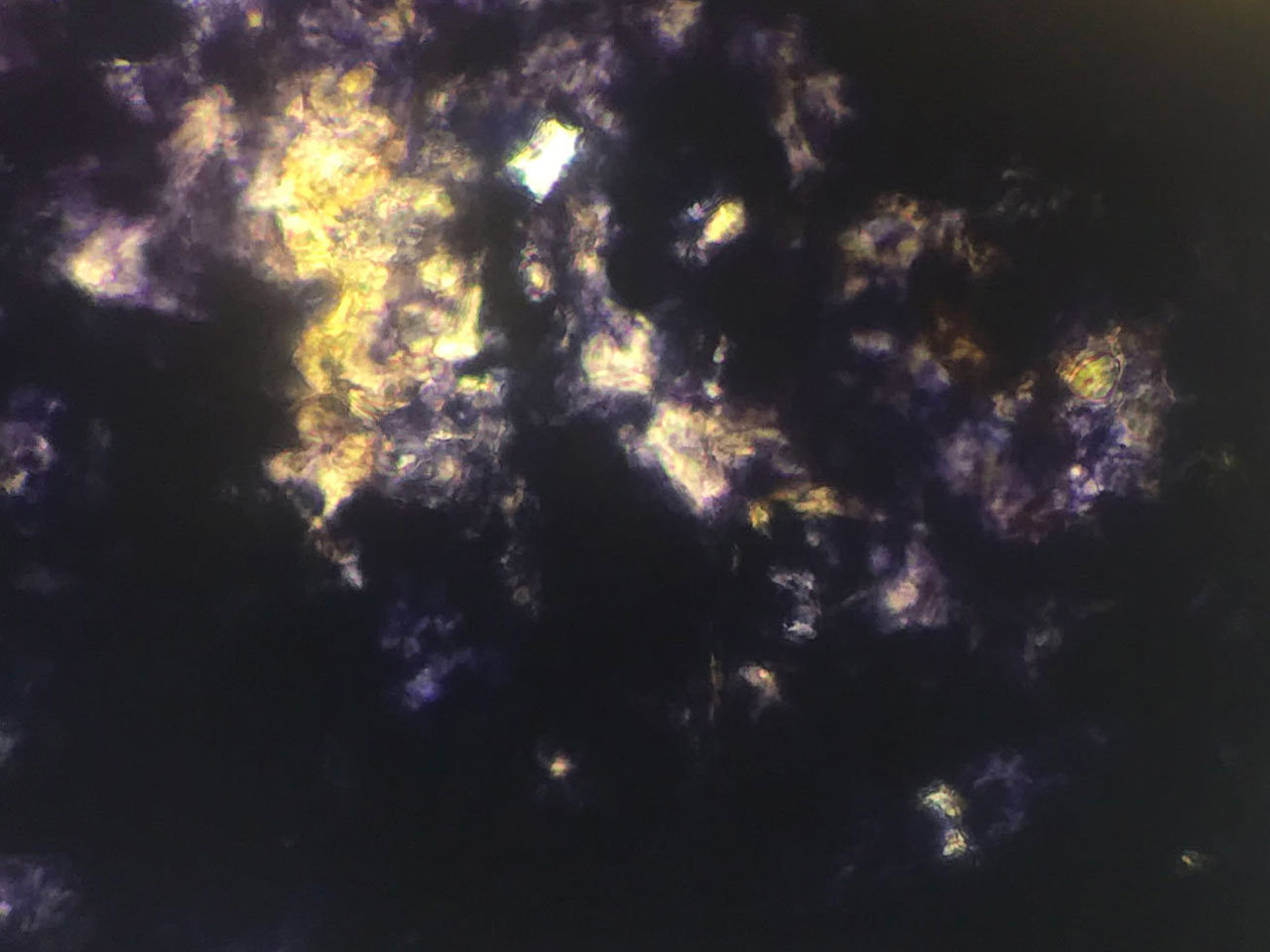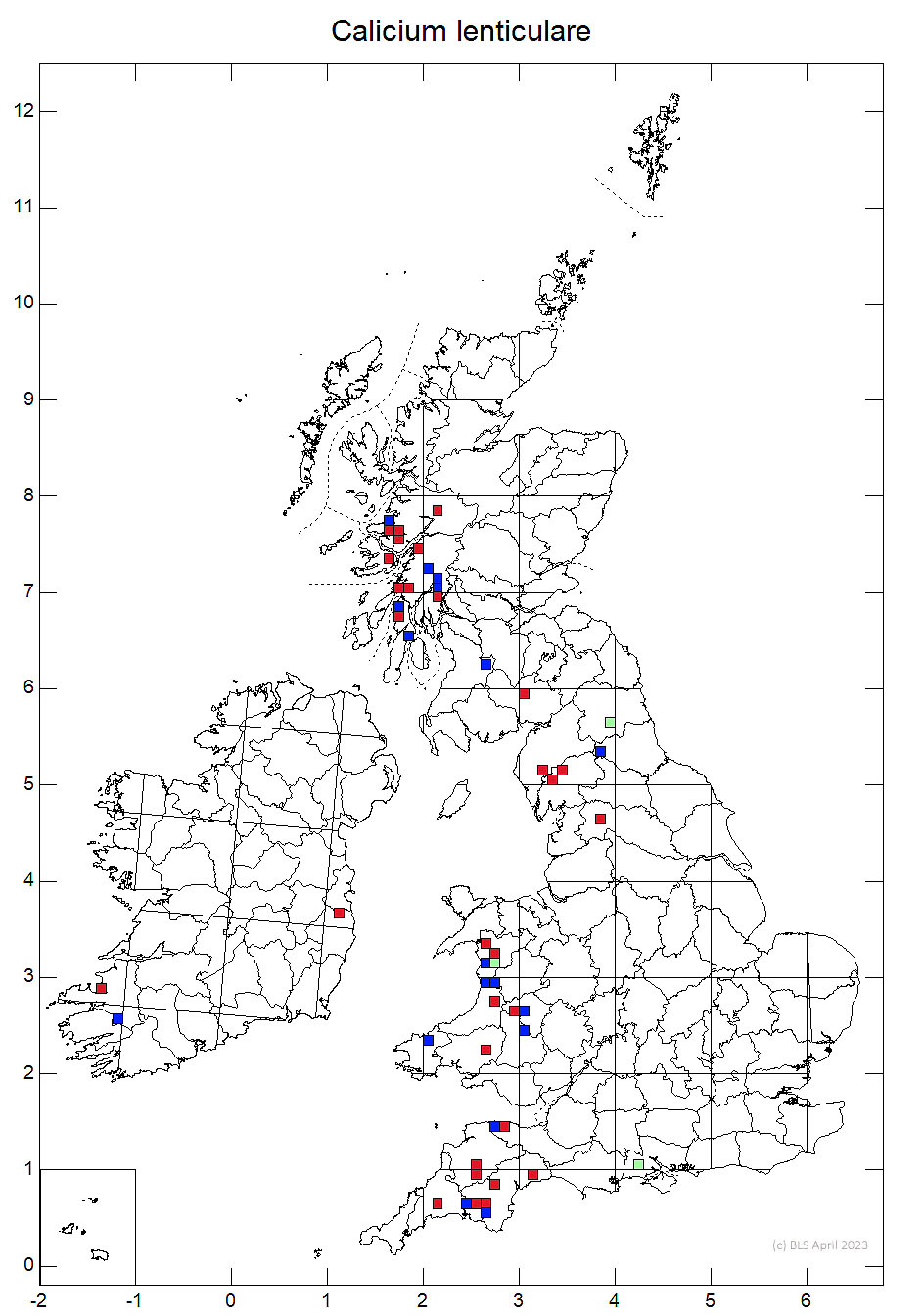Calicium lenticulare
Calicium subquercinum
A pinhead lichen that is distinctive in both its habitat and appearance. It is found on damp bark and lignum in Atlantic woodlands, mainly in upland rainforests, where other Calicium species are rare. Here the greenish thick granular thallus, which is UV+ orange, will generally confirm the species; C. glaucellum can occur on lignum in these woods, but has an immersed or indistinct UV– thallus. Otherwise quite similar to C. hyperelloides, which also has a UV+ orange thallus, but this lichen has a more yellowish, verrucose thallus with a strong C+ orange spot test. It is also found in drier and more sunny Atlantic woodlands than the typical habitat of C. lenticulare.
Thallus granular to verrucose or almost immersed, greenish to yellowish grey or with a bluish tinge. Apothecia 0.6–1.3 mm tall, 4–8 times as high as the width of the stalk, black, mostly with a distinct white pruina on the lower surface of the head; stalk and exciple I+ dark blue (in squash); head 0.2–0.55 mm diam., obconical to lens-shaped; stalk 80–220 μm diam., black or with a reddish tinge. Asci narrowly clavate to ± cylindrical. Ascospores 9–11 × 4–5 μm, remaining non-septate while in the asci, then 1-septate, broadly ellipsoidal, minutely verrucose to areolate. C± faint yellow, C/UV + yellow, K–, UV/K + bright yellow, KC–, Pd–, UV+ orange. Placodiolic and 4-O-methylhypoprotocetraric (±) acids by TLC.
Recognised by the obconical head with an often slightly reddish brown stalk, strong I+ blue reaction of the stalk and exciple, narrowly clavate asci and late formation of the ascospore septum. The previously unrecorded UV+ orange fluorescence of the thallus has caused confusion with Calicium hyperelloides, but this also has a strong C+ orange reaction and lacks the I+ blue reaction of the stalk.
The Calicium species most tolerant of high humidity and characteristic of temperate rainforest habitats. Mainly found on damp bark on older trees but also found on lignum exposed on old trees or standing dead tees, especially of Quercus.

Scare, mainly in high rainfall areas in hilly land, but with a few outlying records from humid locations in drier areas, in W. England, Wales, W. Scotland, S.W. Ireland and the Wicklow Mountains in E. Ireland.
Rather local in old growth upland woodlands in the west, where a widespread threat is from increased shade from reductions in grazing pressure due to abandonment or removal of extensive grazing.
Britain: Notable, International Responsibility species.
Cannon, P., Prieto, M., Coppins, B., Sanderson, N., Scheidegger, C. & Simkin, J. (2021). Caliciales: Caliciaceae, including the genera Acolium, Amandinea, Buellia, Calicium, Diploicia, Diplotomma, Endohyalina, Monerolechia, Orcularia, Pseudothelomma, Rinodina and Tetramelas. Revisions of British and Irish Lichens 15: 1-35.
Text by Neil A Sanderson, based Cannon et al (2021)
